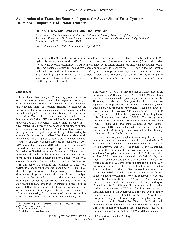摘要
It is believed that the binding of pyrimidin-2-one to cytosine deaminase (CD) leads to the formation of 4-[R]-hydroxyl-3,4-dihydropyrimidine (DHP). Here the formation of transition-state analogue (TSA) at the active site of yeast cytosine deaminase (yCD) is investigated by quantum mechanical/molecular mechanical (QM/MM) molecular dynamics (MD) and free energy simulations. It is shown that DHP may in fact be unstable in the active site and a proton transfer from the Zn hydroxide group to Glu-64 may occur during the nucleophilic attack, leading to an alkoxide-like TSA complex instead. The free energy simulations for the nucleophilic attack process show that the proton transfer from the Zn hydroxide to Glu-64 may play an important role in stabilizing the TSA complex.
- 出版日期2007-6-14
